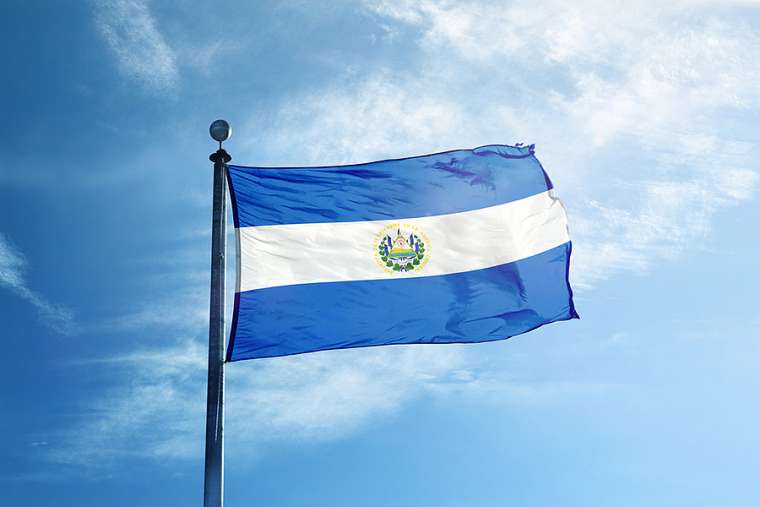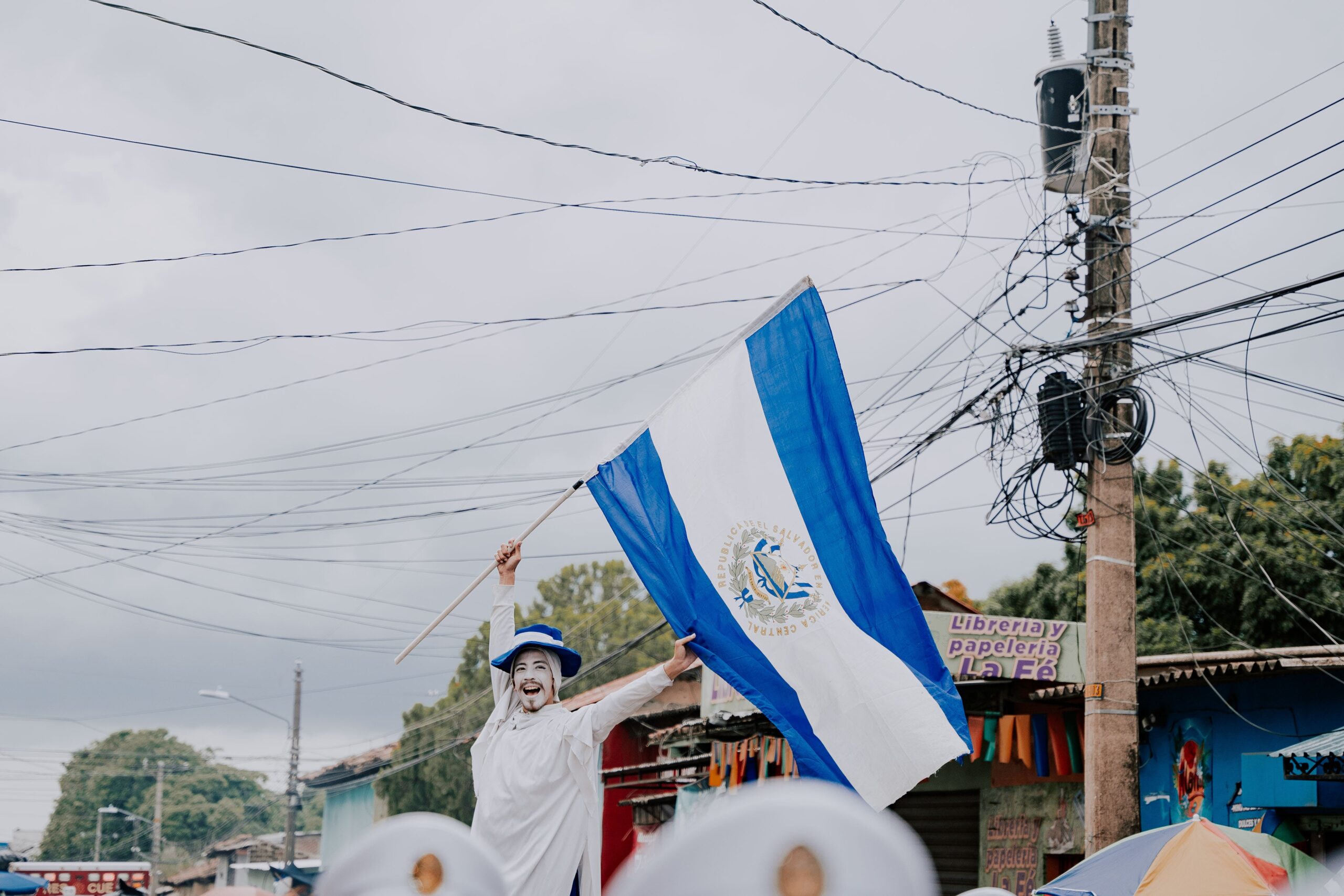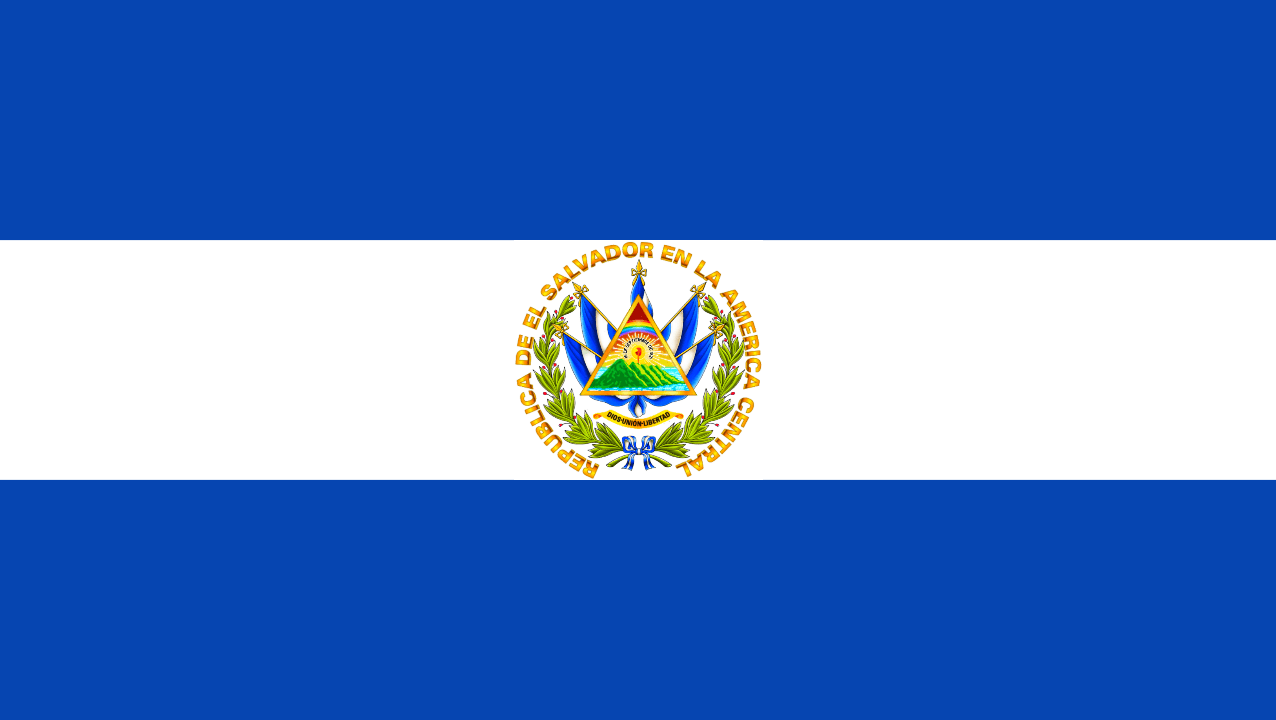The El Salvador flag may not be as widely recognised as some of the world’s most iconic flags, but it holds a significant place in the country’s history and culture. Beyond its striking design, this flag carries a deeply intriguing story that intertwines with the nation’s formative years. It is not just a symbol, it’s a living testament to El Salvador’s past and present.
The flag’s vibrant colours bear witness to the nation’s rich and storied history, serving as a visual reminder of the struggles and triumphs that have shaped the identity of this Central American nation.
Table of Content hide 1 What is the El Salvador flag? 2 El Salvador flag history 3 El Salvador flag meaning 4 El Salvador flag coloursWhat is the El Salvador flag?

The El Salvador flag is the national emblem that represents the country. It features a horizontal triband of cobalt blue-white-cobalt blue, with the coat of arms centred and entirely contained within the central white stripe. This design of a triband of blue, white and blue is commonly used among Central American countries.
El Salvador’s flag is unique as it has a depiction of its flag within the flag itself, much like the flags of the Dominican Republic, Ecuador and Haiti.
ALSO READ: Nicaragua flag: National flag that represents freedom, bright future for Nicaraguans
El Salvador flag history

The history of the flag of El Salvador is a tale of resilience, independence and national identity. This flag has evolved over the years to become a symbol of pride for the Salvadoran people.
The roots of the Salvadoran flag can be traced back to the early 19th century when Central America was under Spanish colonial rule. During this time, the region began to yearn for autonomy and self-governance. The blue and white triband design, commonly used among Central American countries, was inspired by the flag of the United Provinces of the Río de la Plata, which is now known as Argentina.
The liberation flag, bearing these blue and white stripes, made its way to the Caribbean in 1818 and was carried by the privateer Luís Aury. While it only briefly flew over the Santa Catalina Islands off the coast of Central America, it ignited the spirit of independence among the local population.
Central America declared its independence on September 15, 1821, and, after a brief period of Mexican rule, reasserted its sovereignty in 1823. Colonel Manuel José Arce of El Salvador played a pivotal role in this movement against Mexican rule and his flag of blue-white-blue horizontal stripes was blessed in the Church of San Salvador on February 20, 1822. This flag eventually became the national flag of the United Provinces of Central America.
After the dissolution of the United Provinces of Central America into five separate countries, El Salvador continued to use its blue and white flag until 1865. However, for over four decades, a different flag was in use, resembling the Stars and Stripes of the United States.
On September 15, 1912, El Salvador reintroduced the blue and white flag with minor modifications. Since then, it has stood as a symbol of Salvadoran identity. The coat of arms at the centre of the flag bears the national motto, “Dios, Unión, Libertad” (God, Union, Liberty), embodying the country’s values of faith, unity and freedom.
El Salvador flag meaning

The flag of El Salvador is rich in symbolism, reflecting the country’s history, culture, and aspirations. Here is a breakdown of the meaning behind the elements of the flag:
- The Equilateral Triangle symbolises equality among the people.
- Five Indigenous Spears: Represent the five indigenous tribes in El Salvador.
- Beaming solar rays signify the nation’s bright future.
- Scroll: Contains the national motto, “DIOS UNIÓN LIBERTAD” (God, Union, Liberty).
- Etymology: Displays “REPÚBLICA DE EL SALVADOR EN LA AMÉRICA CENTRAL” (Republic of El Salvador in Central America) in bold letters.
ALSO READ: Panama flag: Symbol of Panama’s statehood inspired by creative First Lady
El Salvador flag colours

The flag of El Salvador consists of three main colours:
ALSO READ: Germany flag: National symbol of unity, freedom, democracy for Germans
ncG1vNJzZmivp6x7tLfAm5isoF6YvK57xKVkrJmcq66lu9FmnaWZl2Q%3D